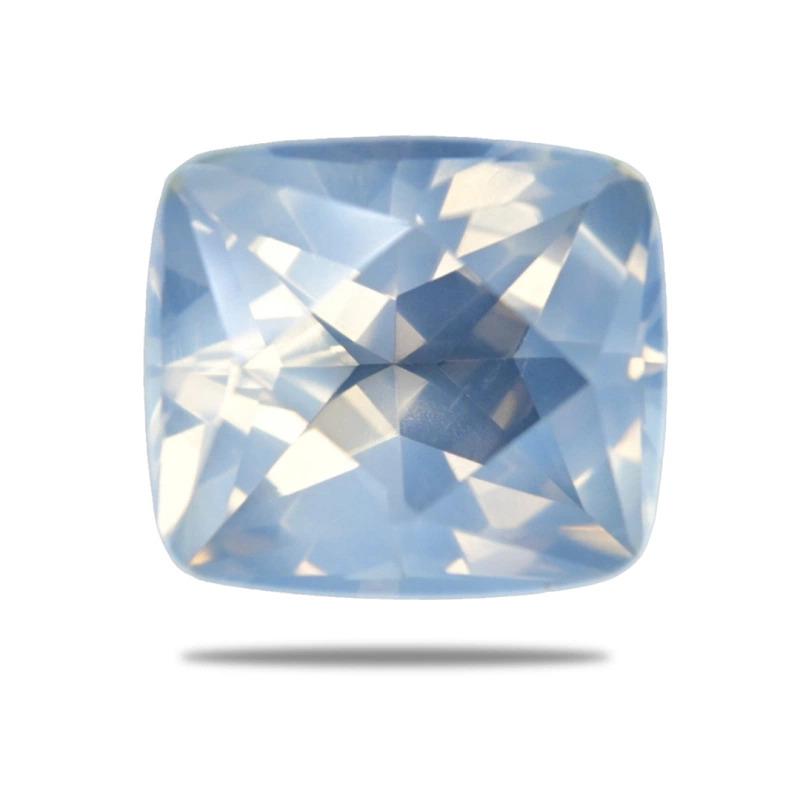
Geboortestenen van juni: parel, alexandriet en maansteen
Er zijn maar twee maanden met drie officiële geboortestenen, en juni is daar één van! Wat zijn de drie edelstenen voor juni? De officiële geboortestenen van juni zijn maansteen, parel en alexandriet.
Juni werd in het oude Rome Junius of lunius genoemd, vernoemd naar de godin van het huwelijk, Juno, of het Latijnse iuniores, wat ‘jeugd’ betekent.
Oude feesten in juni waren onder andere Rosalia (rozenfeest), Vestalia (ter ere van de godin van de haard Vesta en ter herreiniging van Rome) en de zomerzonnewende (eerste dag van de zomer).
De zomerzonnewende wordt nog steeds gevierd, samen met moderne feestdagen in juni zoals Vaderdag, LGBTQ+ Pride Month en Internationale Kinderdag.
Juni staat voor opwinding, evenwicht en verjonging. Het wordt ook geassocieerd met het huwelijk, met een piek in het trouwseizoen.
Deze idealen worden weerspiegeld door de drie geboortestenen van juni: alexandriet, parel en maansteen. Vandaag bespreken we de geschiedenis, eigenschappen en aantrekkingskracht van deze geboortestenen van juni.
video: https://www.youtube.com/watch?v=v2PJNAbPgU8
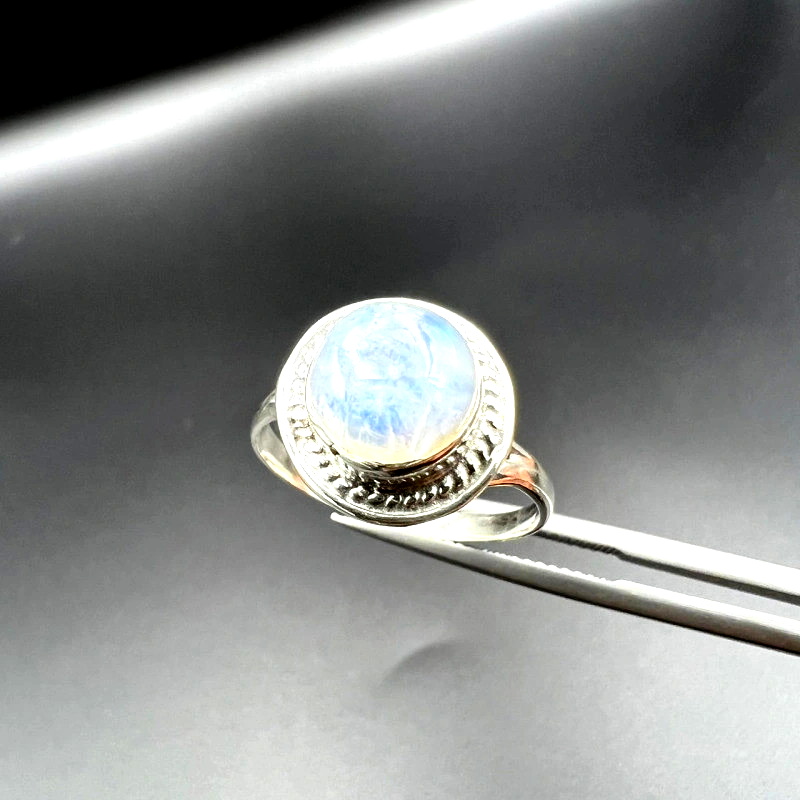 Hierboven afgebeeld: Maansteenring
Hierboven afgebeeld: Maansteenring
Historische en culturele betekenis van de geboortestenen van juni
Je vraagt je waarschijnlijk af: waarom zijn er drie geboortestenen voor juni? Nou, dat waren er niet altijd drie.
Veranderingen in de geboortesteen van juni in de loop van de tijd
Vroegere lijsten met geboortestenen, afgeleid van Bijbelse teksten, interpreteerden de geboortestenen van juni als agaat of smaragd ; nu worden de geboortestenen van mei als zodanig geïnterpreteerd .
Met de introductie van geformaliseerde, moderne geboortesteenlijsten publiceerde Tiffany & Co. in 1870 een pamflet met “Gregoriaanse geboortesteengedichten”, toegeschreven aan een “onbekende auteur”, met een parel voor juni.
De eerste officiële gestandaardiseerde lijst, opgesteld door de National Association of Jewellers (nu de Jewellers of America) in 1912, vermeldde parels als eerste, met maansteen als alternatief. Deze vermelding werd ook overgenomen in de Britse lijst van de National Association of Goldsmiths uit 1937.
De Jewelry Industry Council of America wijzigde de lijst van 1912 in de jaren vijftig om alexandriet voor juni toe te voegen.
Waarom is de geboortesteen van juni veranderd? Alexandriet was een relatief nieuwe edelsteen, en één theorie is dat juweliers geloofden dat alexandriet overvloediger aanwezig was dan parels, wat tegenwoordig niet meer klopt.
Laten we nu eens kijken naar de individuele geschiedenis van elke halfedelsteen .
 Hierboven afgebeeld: Romeins gouden haarsieraad uit de 3e eeuw, bezet met parels, smaragden en saffieren. Te zien in het British Museum. | Beeld: Vassil, publiek domein.
Hierboven afgebeeld: Romeins gouden haarsieraad uit de 3e eeuw, bezet met parels, smaragden en saffieren. Te zien in het British Museum. | Beeld: Vassil, publiek domein.
Parels in oude beschavingen en mythologie
De oudste schriftelijke vermelding van parels dateert uit 2206 v.Chr., toen zoetwaterparels aan de Chinese koninklijke familie werden geschonken. Het oudste bekende parelsieraad, daterend rond 420 v.Chr., is de "Susa Pearls"-ketting. Archeologisch bewijs wijst ook op prehistorisch gebruik van parelmoer in de Indusvallei en Sri Lanka.
De oude Grieken associeerden parels met pracht en praal. Ze geloofden dat de geboortestenen gevormd waren uit de tranen van Aphrodite, de godin van de liefde die volgens mythen eveneens uit de zee geboren was. Oude Japanse legenden beweerden eveneens dat parels afkomstig waren van de tranen van zeemeerminnen of nimfen.
De oude Romeinen noemden parels margaritae of unio . Ze gebruikten parels als statussymbolen, alleen gedragen door de rijken en de adel.
In het oude Egypte werden parels gelinkt aan Isis, de godin van de genezing, en in graven gelegd. Een beroemd verhaal is dat Cleopatra een weddenschap met Marcus Antonius won door een van haar pareloorbellen in azijn te doen en op te drinken!
Een hindoelegende zegt dat parels dauwdruppels waren die van de maan vielen. Een andere hindoemythe over de oorsprong van de parel is dat de god Krishna de eerste parel vond en deze aan zijn dochter gaf als huwelijksgeschenk om haar te behoeden voor weduwe worden en een succesvol, lang huwelijk te garanderen.
Bovendien wordt in Vedische teksten gezegd dat de parel oorspronkelijk afkomstig is van het water van de aarde en goddelijke energie die de parel verwekten en deze vervolgens met bliksem bevruchtten.
In de Islam worden parels in de Koran beschreven als versieringen in het paradijs, als vruchten en als kronen voor degenen die de hemel binnengaan.
Andere interpretaties van de betekenis van deze geboortesteen voor juni zijn onder andere bescherming tegen vuur in het oude China en symbool voor zuiverheid in Europa.
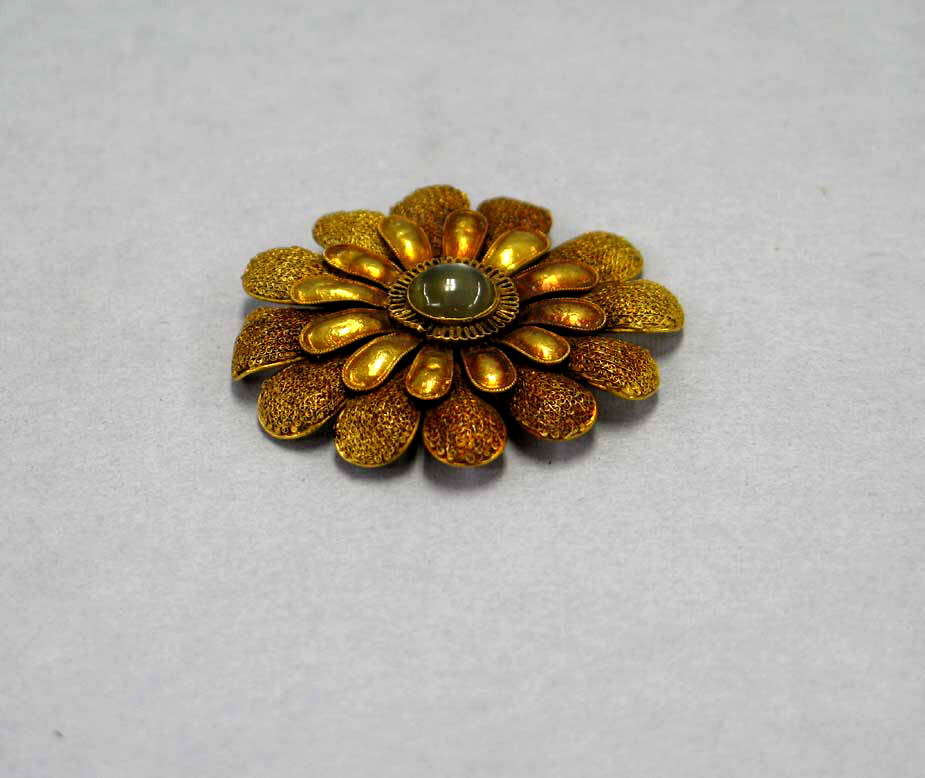 Hierboven afgebeeld: Chinees gouden ornament met maansteen, gedateerd 960-1279 Song-dynastie; tentoongesteld in het Metropolitan Museum of Art | Beeld: Met Museum, publiek domein
Hierboven afgebeeld: Chinees gouden ornament met maansteen, gedateerd 960-1279 Song-dynastie; tentoongesteld in het Metropolitan Museum of Art | Beeld: Met Museum, publiek domein
Geschiedenis van maansteen van oud tot modern
De naam Maansteen is geïnspireerd op zijn adularescentie, die lijkt te gloeien van binnenuit, als zacht maanlicht.
Oude Romeinse legendes vertellen dat maansteen ontstond toen maanlichtstralen verhardden en een geschenk was van maangodin Diana. Ze keken in de steen om Diana te zien en haar liefde en wijsheid te ontvangen.
De oude Grieken noemden de steen Aphroselene , een samentrekking van Aphrodite en maangodin Selene. Ze associeerden maansteen ook met Hecate, de godin van de magie, en Artemis, de godin van de jacht en kuisheid.
In het oude India werd gezegd dat maanstenen op het voorhoofd van de maangodin Chandra (of maangod Ganesh) gloeiden of dof werden tijdens de wassende of afnemende maanfasen.
Volgens een Aziatische mythe spoelen blauwe maanstenen elke 21 jaar aan. Oude Oost-Aziaten hingen maanstenen in bomen om overvloedige oogsten te bevorderen en geloofden dat het veranderende licht van de edelsteen duidde op een geest die erin leefde.
Reizigers gebruikten maansteen-talismannen ook voor bescherming, wat de bijnaam 'reizigerssteen' aan de geboortesteen van juni ontleende.
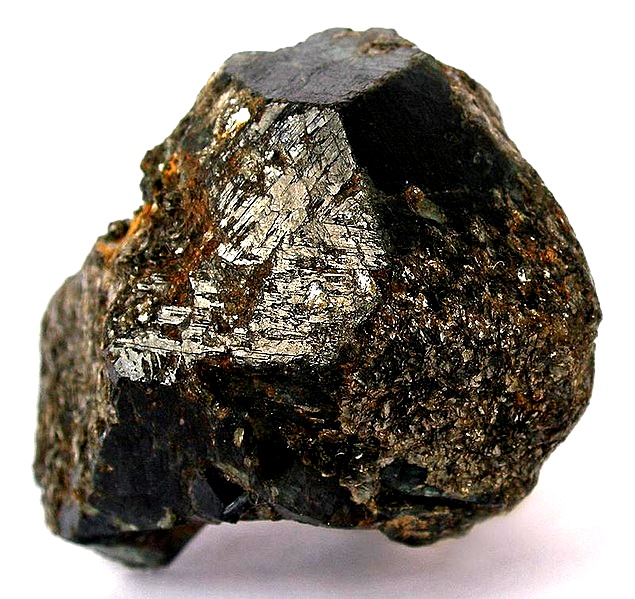 Hierboven afgebeeld: een uitstekend, klassiek referentie-exemplaar van alexandriet uit de Oeral, Rusland, met een stevige vorm, wat slijtage aan de rand, interne edelsteen, maar desalniettemin met kleurverandering; bijgevoegd met etiket gedateerd op 1850 | Afbeelding: Rob Lavinsky, iRocks.co m – CC-BY-SA-3.0
Hierboven afgebeeld: een uitstekend, klassiek referentie-exemplaar van alexandriet uit de Oeral, Rusland, met een stevige vorm, wat slijtage aan de rand, interne edelsteen, maar desalniettemin met kleurverandering; bijgevoegd met etiket gedateerd op 1850 | Afbeelding: Rob Lavinsky, iRocks.co m – CC-BY-SA-3.0
Alexandrite's reis van Rusland naar de wereld
Alexandriet is de meest recent ontdekte geboortesteen voor juni. De van kleur veranderende rood-groene edelsteen werd in 1834 ontdekt in het Russische Oeralgebergte en vernoemd naar Alexander II, de aanstaande tsaar die op zijn zestiende verjaardag zou worden.
De verhalen lopen uiteen over wie de alexandriet als eerste ontdekte en zijn naam gaf. Het was de Finse mineraloog Nils Gustaf Nordenskiöld, de manager van de Oeralmijn Vasilevich Kokovin, de Duitse mineralogieprofessor Gustav Rose, of de Russische mineraloog graaf L.A. Perovskii. Hoe dan ook, graaf L.A. Perovskii gaf de edelsteen aan Alexander II voor zijn verjaardag op 29 april.
Rusland was de enige bron, hoewel hun mijnen in de jaren 1890 vrijwel leeg waren. Brazilië werd een andere bron in 1987, gevolgd door Sri Lanka en Zimbabwe.
Russische alexandriet werd een symbool van prestige en nationale trots, en weerspiegelde toevalligerwijs de Russische militaire kleuren. Alexander II zou dagelijks een ringtalisman van alexandriet hebben gedragen.
Andere culturen zagen de kleurveranderingen van de geboortesteen van juni als een teken van gevaar.
Geschiedenis? Check. Laten we nu eens kijken naar de kleuren en unieke eigenschappen van deze geboortestenen.
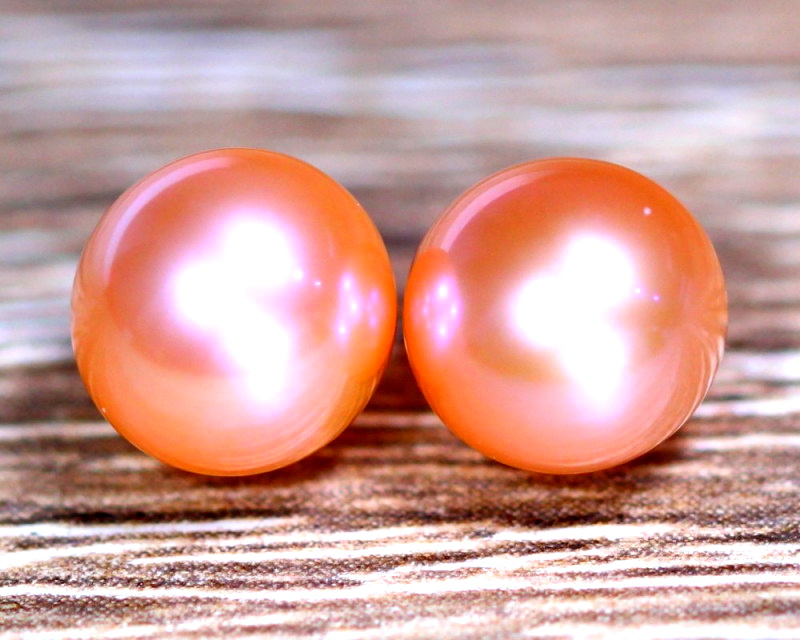 Hierboven afgebeeld: roze Akoya-parels
Hierboven afgebeeld: roze Akoya-parels
Parels: de edelstenen van de zee
Parels, misschien wel de "klassieke" geboortesteen van juni, zijn ontegenzeggelijk uniek. Ten eerste zijn het mineraloiden (geen mineralen) en een van de weinige organische edelstenen , oftewel edelstenen die door een levend organisme zijn gemaakt.
In dit geval ontstaan parels in weekdieren wanneer een irriterende stof zoals zand in de schelp van het dier terechtkomt. Het weekdier scheidt laagjes parelmoer af rond de irriterende stof. Dit parelmoer bestaat uit calciumcarbonaat (calciet , aragoniet , of beide). De opgebouwde parelmoerlagen creëren de kenmerkende "parelmoerachtige" glans.
De zeldzaamheid van deze geboortesteen van juni is exclusief voorbehouden aan natuurlijke parels, die in het wild groeien zonder menselijke tussenkomst. De meeste pareledelstenen van tegenwoordig zijn gekweekte parels , die op dezelfde manier groeien, maar de irriterende stoffen worden door mensen op parelkwekerijen toegevoegd.
Natuurlijke parels zijn meestal klein en onregelmatig van vorm, terwijl gekweekte parels vaak rond of bijna rond zijn. U kunt de oorsprong van uw parel als geboortesteen altijd verifiëren door deze naar een laboratorium zoals het GIA te sturen.
Parelsoorten en -waarden
Enkele van de meest populaire soorten parels zijn:
Akoya : Eerste en meestal hoogste kwaliteit gekweekte parel; Langzamere opbouw van parelmoerlaag, wat een betere glans en rondere vorm betekent; Vaak gebleekt en wit geverfd met rozentonen
Zoetwater : gevormd door zoetwaterweekdieren, meestal gekweekt; doorgaans dikker parelmoer, onregelmatiger van vorm en minder glanzend, maar met mooiere kleuren dan zoutwaterparels.
Zoutwater : Gevormd door zoutwaterweekdieren, meestal gekweekt; Historische standaard voor prachtige parels
Zuidzee : Gekweekt uit zoutwateroesters met zilveren of gouden lippen; Dikker parelmoer en groter dan Akoyas; Meestal wit, crème of goudkleurig
Tahitiaans : Gekweekt uit zwartlip-zoutwateroesters, voornamelijk in Frans-Polynesië; Alleen van nature zwarte parels, maar vaak donkergroen of grijs; Kan wit, blauw, zilver, paars of geel zijn; Vertonen irisatie, ook wel 'orient' genoemd
De grootste waardefactor is natuurlijk versus gekweekt: natuurlijke parels uit de geboortesteen van juni zijn aanzienlijk duurder.
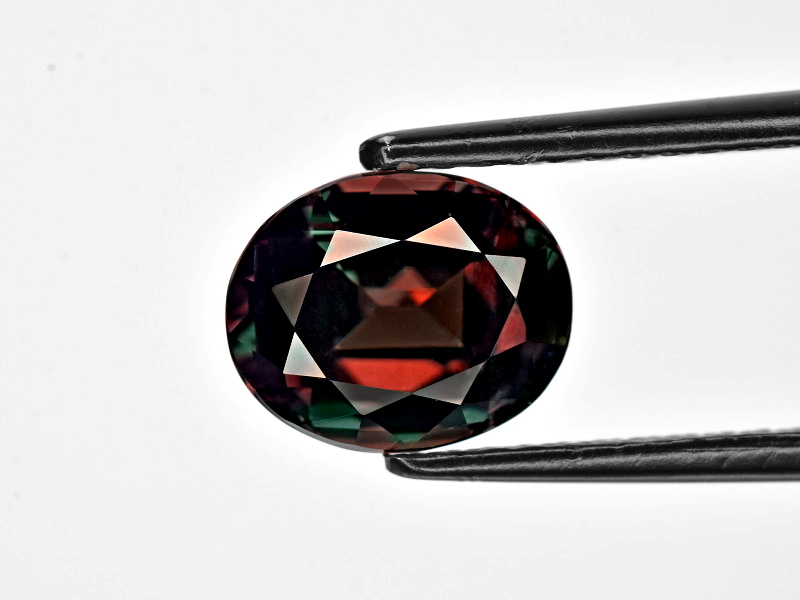
Alexandriet: de kameleon-edelsteen
Alexandriet is een chrysoberylvariant waarbij een deel van het aluminium is vervangen door chroom. Het staat bekend om zijn kleurverandering, veroorzaakt door die chroomverontreinigingen.
Wat is de kleur van deze geboortesteen van juni? De beste alexandrieten zijn smaragdgroen bij daglicht en roodpaars bij gloeien, wat de bijnaam "Smaragd overdag, robijn 's nachts" inspireerde. De meeste hiervan zijn Russisch.
Andere kleurveranderingen variëren van geel of perzik tot felroze of van blauwgroen tot magenta. Sri Lankaanse alexandriet is vaak olijfgroen, terwijl Braziliaanse alexandriet vaak lichter is.
De waarde van alexandriet wordt voornamelijk bepaald door de zuiverheid, de mate en de mate van kleurverandering.
Kattenoog- alexandrieten zijn bijzonder zeldzaam en waardevol.
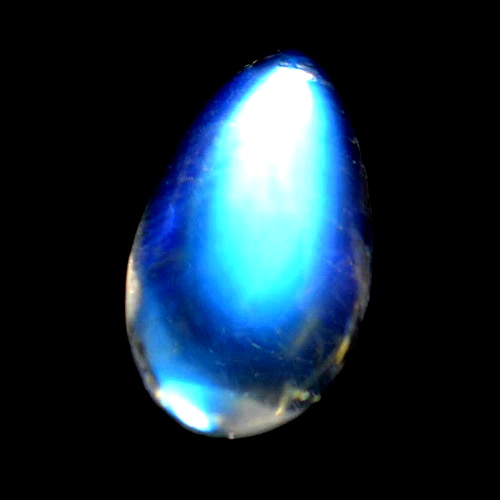
Maansteen: stralende schoonheid en kleuren
Van de drie geboortestenen voor juni is maansteen de meest toegankelijke, maar zeker niet minder indrukwekkend.
Maansteen heeft afwisselende, dunne lagen veldspaat albiet en oligoklaas of orthoklaas . Wanneer licht deze lagen binnendringt, ontstaat de kenmerkende zwevende, interne gloed van maansteen, ook wel 'adularescentie' genoemd.
De beste maanstenen zijn kleurloos met een zuivere blauwe glans. Maar de kleur van de geboortesteen van juni omvat ook tinten zoals perzik, groen en oranje.
De meeste maanstenen worden geslepen in cabochons , maar facetten kunnen oneffenheden verbergen en de schittering versterken. Andere maansteenslijpvormen zijn kralen en snijwerk.
Dat omvat mineralogie en uiterlijk, dus het is tijd om de geboortestenen van juni en hun betekenissen te onderzoeken.
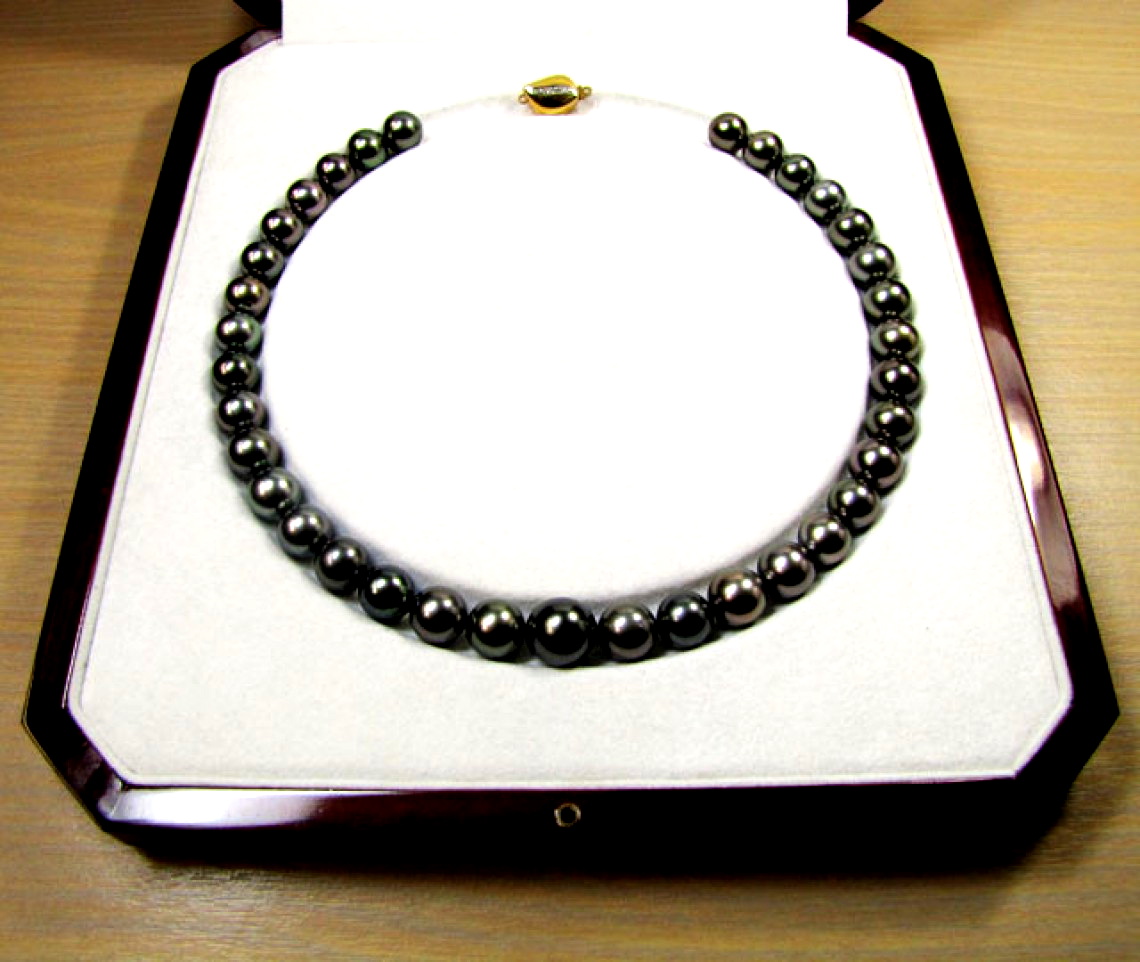 Hierboven afgebeeld: Tahitiaanse parelketting
Hierboven afgebeeld: Tahitiaanse parelketting
Parels: symboliek en betekenis
Parels worden al eeuwenlang geassocieerd met vrouwelijkheid, wijsheid en transformatie.
Vrouwelijkheid
De etherische uitstraling en aquatische oorsprong van de parel hebben associaties opgeroepen met de maan, vrouwelijkheid en water. De maan en de getijden zijn verbonden met traditioneel vrouwelijke idealen die inspelen op veranderende emoties.
De maanzijde van parels zou de intuïtie versterken en je verbinden met spirituele sferen. Daarnaast worden parelstenen traditioneel gebruikt voor vruchtbaarheid, hormoononevenwichtigheden en een soepelere bevalling.
Wijsheid
De band tussen parels en kennis wordt geïllustreerd door de uitdrukkingen ‘parels van wijsheid’ (wijsheid) en ‘gooi geen parels voor de zwijnen’ (wijsheid) dat wil zeggen dat je iets waardevols niet aan anderen aanbiedt, die het niet op prijs zullen stellen.
In de Bijbel vertegenwoordigen parels meestal de waarde van wijsheid. Hindoeïstische, taoïstische en boeddhistische filosofieën noemen "vlammende parels" als symbool voor spirituele wijsheid. Sommige ouden geloofden dat parels levenslessen bevatten en de doden door het hiernamaals leidden.
De verborgenheid en vorming van de geboortesteen van juni staan ook voor wijsheid die voortkomt uit ervaring.
Transformatie
Parels hebben jaren nodig om zich te vormen, meestal beginnend met een zandkorrel en uitgegroeid tot een prachtige edelsteen. Het is dan ook niet verwonderlijk dat deze geboortestenen van juni staan voor transformatie.
Om motiverende spreker Susan C. Young te citeren: "De oester heeft wat eerst een irritatie en een inbreuk was, gebruikt om zijn waarde te verrijken."
Oude Aziaten geloofden dat parels symbool stonden voor de reis van een ziel naar perfectie. Tarotlezers associëren de parel met de reis van de Dwaas als een pad van zelfontdekking.
 Hierboven afgebeeld: Alexandriet ring met accentdiamanten | Beeldcredits: Christina Rutz, Flickr , CC-BY-SA-2.0
Hierboven afgebeeld: Alexandriet ring met accentdiamanten | Beeldcredits: Christina Rutz, Flickr , CC-BY-SA-2.0
De mystiek en metafysische eigenschappen van Alexandriet
Er is niet zoveel over Alexandriet bekend, maar het heeft toch betekenis gekregen.
Net als een parel symboliseert alexandriet transformatie . De steen van juni zou verjongend werken en je helpen de veranderingen in het leven te omarmen.
De van kleur veranderende steen staat ook voor evenwicht , of het nu gaat om emotioneel evenwicht, fysiek en spiritueel evenwicht of gewoon geaard blijven.
Andere associaties met alexandriet zijn geluk, succes en creativiteit.

Betekenissen en krachten van maansteen
Maansteen deelt metafysische eigenschappen met parels en is verbonden met vrouwelijkheid, wijsheid en de maan.
Magiërs gebruikten maansteen van oudsher strategisch voor spreuken gebaseerd op de huidige maanfase. Veel mystici gebruiken maansteen als hulpmiddel om zich te concentreren tijdens meditatie. Kristalgenezers raden maansteen aan voor de behandeling van slapeloosheid.
Maansteen staat ook symbool voor liefde en huwelijk.
Een Indiase traditie houdt in dat koppels de geboortesteen van juni tijdens volle maan in hun mond stoppen om hun toekomst te voorspellen . Zowel de oude Grieken als de Indiërs geloofden dat maanstenen de toekomst vooruit hielpen.
Voor mensen zonder partner: er is een legende die zegt dat je de ware liefde kunt aantrekken door tijdens volle maan een intentie te zetten met een maansteen en deze bij je te houden tot de volgende volle maan.
Vier de momenten van het leven met geboortestenen voor juni
Vraagt u zich af wat de populairste geboortesteen voor juni is?
Voor de meeste sieraden zijn parels de koning. Alexandriet wordt echter vaker gebruikt voor ringen met een geboortesteen voor juni, en maansteen is het meest verkrijgbaar.
Wat is astrologisch gezien de geboortesteen voor juni en Tweelingen? Alexandriet is de beste geboortesteen voor Tweelingen in juni en vervult hun behoefte aan evenwicht.
Voor Kreeften die in juni geboren zijn, passen maansteen en parel perfect bij het planetaire lichaam van Kreeft (de maan) en versterken ze de natuurlijke intuïtie van het teken.
Het geven van een geboortesteen voor juni is een betekenisvol gebaar om een geliefde te eren.
De mogelijkheden variëren van sieraden met de geboortesteen van de maand juni tot decoraties met rozen (de junibloem) en zelfs een schilderij van het favoriete kristal van de ontvanger van juni.
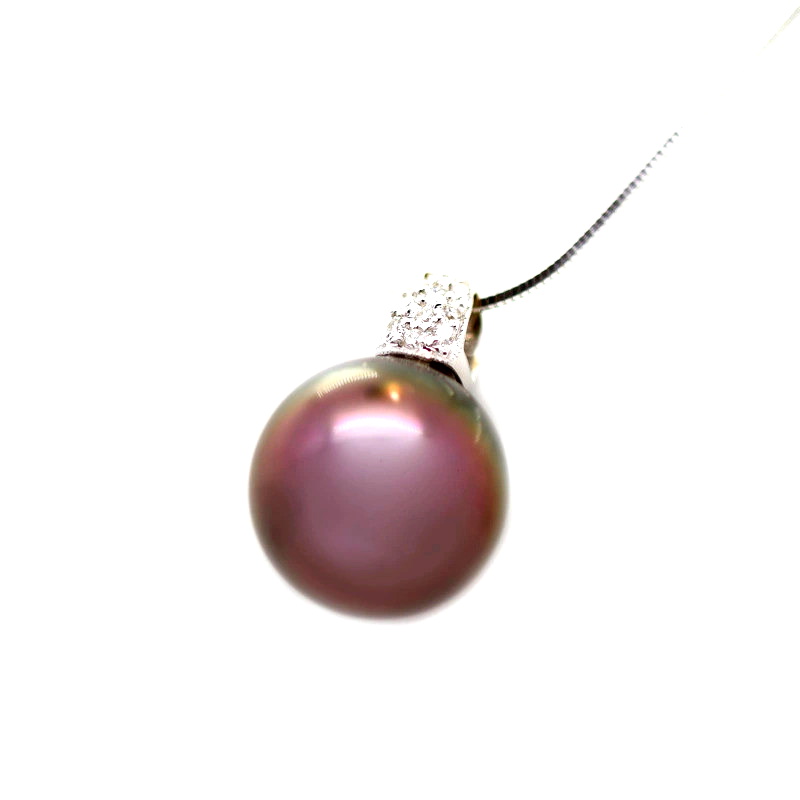 Hierboven afgebeeld: ketting van gekweekte zoutwaterparels
Hierboven afgebeeld: ketting van gekweekte zoutwaterparels
Welk juweel van juni is jouw favoriet?
Juni staat voor liefde, opwinding en evenwicht, wat wordt geïllustreerd door alexandriet, maansteen en parel. Deze edelstenen hebben elk hun eigen aantrekkingskracht, en dankzij hun verschillende verschijningsvormen en prijsniveaus is er voor elk budget een perfecte geboortesteen voor juni!
Zoek de Gemstone Encyclopedia
Gerelateerde veilingen
gerelateerde artikelen
Azotische behandeling van topaas en kwarts is een behandeling waarbij een kleurlaag over een edelsteen wordt aangebracht. Lees meer over deze behandeling en bekijk onze stenen in de aanbieding.
8th May 2018
Er zijn veel behandelingen voor parels die hun uiterlijk veranderen. De meeste van deze behandelingen zijn acceptabel. Lees meer over deze edelsteen en bekijk de prachtig geslepen stenen die we te koop aanbieden.
12th Jun 2018
Tahitiaanse parels zijn prachtige donkergekleurde parels die in allerlei verschillende vormen, maten en kleuren voorkomen. Kom meer te weten over deze edelsteen en bekijk de prachtige parels die we te koop aanbieden.
9th May 2018
Laatste artikels
Snijwerk van palmivoor, ook wel plantaardig ivoor genoemd, is een natuurlijk alternatief voor olifantenivoor. Het wordt op ethische wijze gewonnen uit de palmnoot van de Zuid-Amerikaanse Phytelephas-palm. Lees alles over palmivoor in deze gids!
15th Jan 2026
Chrysantenbloemstenen zijn natuurwonderen met een wit calciet-, celestiet- of andalusietbloemmotief op een zwarte kalksteen of moddersteen.
13th Jan 2026
Regenboogzonnesteen is een veldspaatsoort met drie prachtige optische effecten, veroorzaakt door de aanwezigheid van diverse insluitingen. De vurige kleurenpracht en het rasterpatroon maken het tot een zeldzame edelsteen voor verzamelaars!
12th Jan 2026
Artikelcategorieën
How To's is where you will find helpful articles from gem Rock Auctions on how to cut gemstones, select gemstones and buy gemstones.
9 Artikelen



